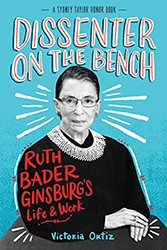Barely more than a century ago, a Jew took a seat on the Supreme Court under highly contentious circumstances, with half a dozen past presidents of the American Bar Association declaring Louis D. Brandeis to be unfit for so consequential a post. He nevertheless served with distinction, inaugurating what would come to be considered “the Jewish seat” on the nation’s highest appellate court. But, as David Dalin shows in this exceptionally absorbing and informative portrait gallery of Justice Brandeis and his seven successors, such an entitlement for a member of so tiny an ethno-religious minority has been historically contestable. For example, two Jews have served simultaneously — in the 1930s, when Benjamin Nathan Cardozo joined Brandeis; and now, when, remarkably enough, a trio serves: Ruth Bader Ginsburg, Stephen Breyer, and Elena Kagan. And during an era of Republican ascendancy, from Richard Nixon through George H. W. Bush (and when Jimmy Carter had no vacancies to fill), no Jews were added to the Supreme Court. President Nixon and his attorney-general, John Mitchell, even sneered at the very notion of nominating a Jew to succeed the disgraced Abe Fortas, according to John W. Dean’s The Rehnquist Choice (2001), a book that Dalin cites in a bibliography that is admirably comprehensive. So secure is the current status of American Jews — whether as citizens, or as members of the bar — that the very notion of rewarding them with a slot on the Court seems rather quaint.
The span of a century, as Jews reached such a pinnacle of public life, includes a bewildering number of byways, and Dalin has a special flair for revealing the peculiarities of each path that the eight Justices took to the top. He is ingenious in drawing biographical comparisons and in making historical generalizations about the composition of the Court; and lurking in his book are many surprises. (For instance, Felix Frankfurter, for all of his braininess, had virtually no scholarly credentials when he joined the faculty of Harvard Law School; nor did he become a more dedicated scholar in the two decades before joining the Court.) Dalin’s accounts of the major cases and decisions for which the eight were responsible are lucid and succinct. A rabbi as well as historian, he offers the greatest illumination on the Jewishness of these Justices. Some — like Frankfurter and Fortas — started out Orthodox but had completely abandoned observance (and presumably faith) by adolescence. Brandeis started out barren of any sort of Judaic practice, and the only holiday that he honored in any way was Christmas. Besides Brandeis, only Arthur Goldberg played an active role in organized Jewry, serving as president of the American Jewish Committee and of the Board of Overseers at the Jewish Theological Seminary. Though Breyer, who started out Reform, is a partial exception, recent Justices have been more willing than their predecessors to pay tribute to the ideal of peoplehood. What would Brandeis have made of the mezuzah that Ginsburg nailed to the doorpost of her chamber? What would Frankfurter, who refused to hire her as his clerk because of her gender, have made of Kagan, the only Justice in American history to have celebrated her bat mitzvah?
Stephen Whitfield is Professor of American Studies (Emeritus) at Brandeis University. He is the author of Learning on the Left: Political Profiles of Brandeis University (2020).


